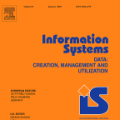This paper addresses the interesting problem of processing and analyzing data in geographic information systems (GIS) to achieve a clear perspective on urban sprawl. The term urban sprawl refers to overgrowth and expansion of low-density areas with issues such as car dependency and segregation between residential versus commercial use. Sprawl has impacts on the environment and public health. In our work, spatiotemporal features related to real GIS data on urban sprawl such as population growth and demographics are mined to discover knowledge for decision support. We adapt data mining algorithms, Apriori for association rule mining and J4.8 for decision tree classification to geospatial analysis, deploying the ArcGIS tool for mapping. Knowledge discovered by mining this spatiotemporal data is used to implement a prototype spatial decision support system (SDSS). This SDSS predicts whether urban sprawl is likely to occur. Further, it estimates the values of pertinent variables to understand how the variables impact each other. The SDSS can help decision-makers identify problems and create solutions for avoiding future sprawl occurrence and conducting urban planning where sprawl already occurs, thus aiding sustainable development. This work falls in the broad realm of geospatial intelligence and sets the stage for designing a large scale SDSS to process big data in complex environments, which constitutes part of our future work.
翻译:本文探讨了地理信息系统中处理和分析数据以明确了解城市无计划扩展的有趣问题。城市无计划扩展一词是指低密度地区的过度增长和扩大,其问题包括汽车依赖性以及住宅和商业使用之间的隔离。无计划对环境和公共卫生产生影响。在我们的工作中,与城市无计划扩展(如人口增长和人口)的实际地理信息系统数据有关的空间特征被挖掘出来,以发现用于决策支持的知识。我们调整了数据开采算法、联系规则采矿优先和决定树分类的J4.8,以进行地理空间分析,利用ArcGIS工具进行绘图。开采这一随机数据所发现的知识被用于执行一个原型的空间决策支持系统(SDSS)。SDSS预测了城市无计划扩展的可能性。此外,SDSS还估算了相关变量的价值,以了解变量的相互影响。SDSS可以帮助决策者找出问题,并创造解决办法,避免未来出现无计划扩展的城市规划,从而帮助在已经发生“无计划”的地方进行。通过开采这种“ArcGIS”所发现的知识被用来实施一个原型的空间支持系统(SDSS)系统,从而设计了我们未来的大空间空间空间空间环境的复杂大过程。




